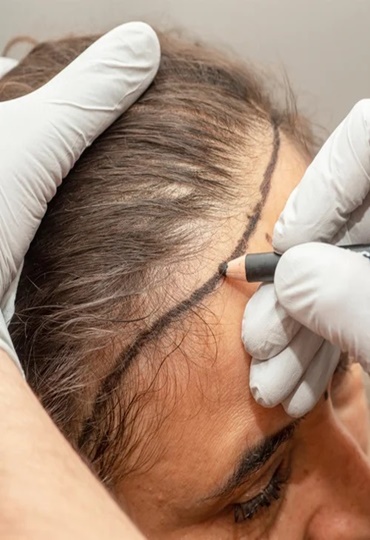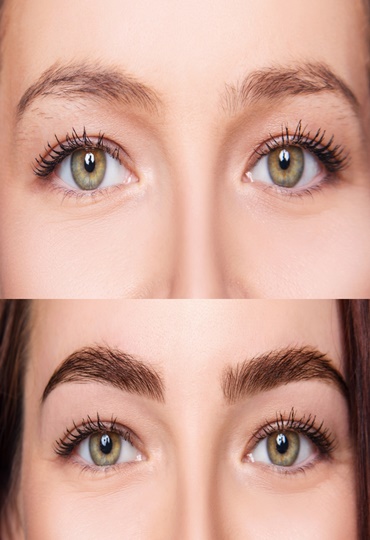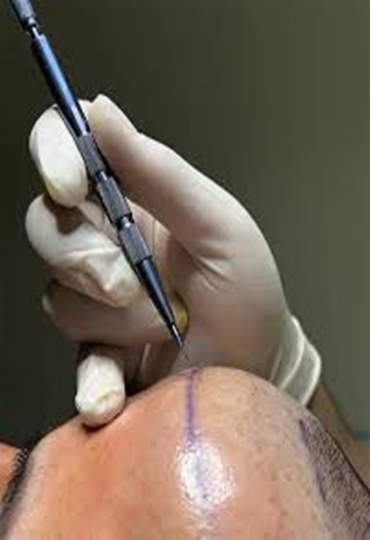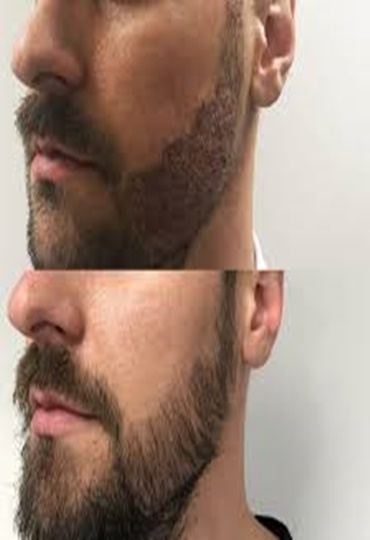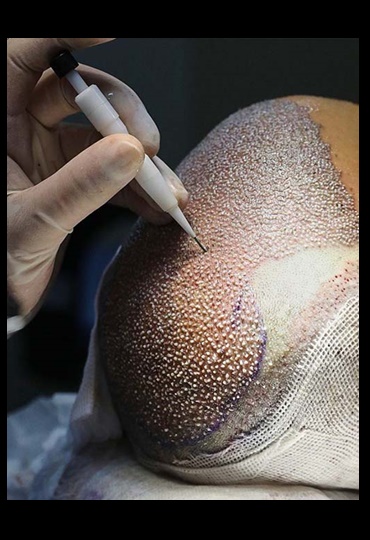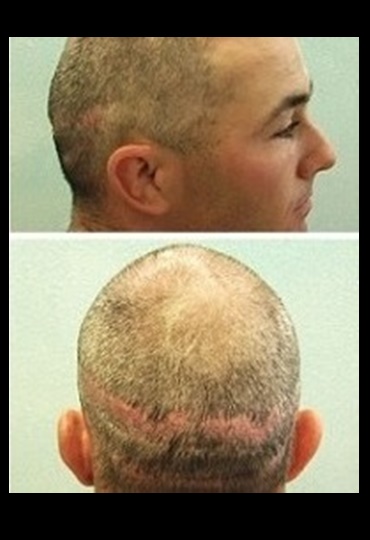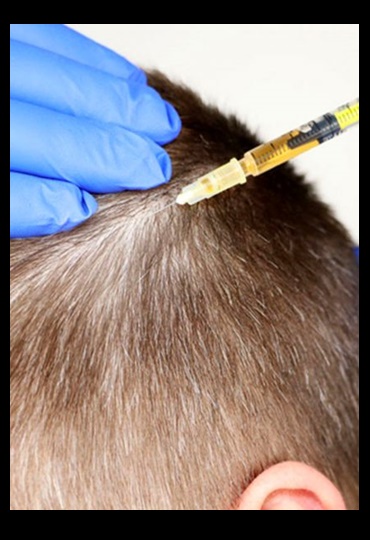Hair Transplant
Hair transplantation is not just about appearance. It’s about restoring confidence, self-esteem, and quality of life naturally and permanently.
-
1. Initial Consultation & Planning
The process begins with a comprehensive consultation. We evaluate your hair loss pattern, donor area quality, and expectations. Based on this, we design your hairline and create a personalized treatment plan.
-
2. Pre-Operation Preparation
Before the procedure, you will receive detailed instructions. You may be asked to stop alcohol, smoking, and certain medications. Basic medical tests are also conducted for your safety.
-
3. Local Anesthesia & Graft Extraction
Local anesthesia is applied to ensure a pain-free experience. Hair follicles are carefully extracted from the donor area using the FUE or Sapphire FUE technique, leaving no visible scars.
-
4. Channel Opening
Tiny channels are created in the recipient area to prepare for implantation. With Sapphire FUE, sapphire blades are used for higher precision, better density, and faster healing.
-
5. Graft Implantation
Each graft is placed into the channels at the correct angle and direction, ensuring a natural look and balanced density.
-
6. Post-Operation Instructions
You will receive medications, a special shampoo, and clear washing instructions. The first wash is usually done at the clinic or with video guidance.
-
7. Recovery Period
Mild scabbing and redness are expected during the first 10–15 days. Shock loss (temporary shedding) may occur in the first few weeks, which is completely normal.
-
8. Hair Growth Timeline
3 months: First new hairs appear
6 months: Visible improvement
12 months: Full, permanent results
-
9. Aftercare & Follow-Up
We provide full support for 12 months, including online follow-ups, WhatsApp check-ins, and optional in-clinic visits.
-
10. Optional Supportive Treatments
To boost results, we may offer: • PRP Therapy
• Mesotherapy
• Laser Therapy
• Ozone Therapy
• Beard and Eyebrow Transplants
Extra Procedures and Services in Hair Transplantation
In addition to the main hair transplant techniques, clinics may offer several extra procedures to enhance the overall results and patient experience:
• Scalp Micropigmentation (SMP): A non-surgical treatment that uses detailed micro-needles to deposit pigment into the scalp, creating the appearance of fuller hair or camouflaging scars.
• Beard and Eyebrow Transplant: Similar techniques are used to restore hair in facial areas, improving overall aesthetics.
• Post-Operative Care Programs: Customized treatment plans including medications, topical solutions, and therapies like PRP to support healing and hair growth.
• Consultation and Planning: Detailed evaluation of patient’s hair loss pattern, donor area quality, and realistic outcome expectations.
Offering these extra services allows clinics to provide a comprehensive approach tailored to each patient’s needs, ensuring better satisfaction and long-term success.
Hair Transplant Recovery and Aftercare
Proper recovery and aftercare are essential for successful hair transplant results. After the procedure, patients receive detailed instructions to support healing and maximize graft survival.
Common recommendations include:
• Avoiding direct sun exposure and strenuous activities for several weeks.
• Gentle washing of the scalp with mild shampoos as advised by the clinic.
• Using prescribed medications to reduce inflammation and prevent infection.
• Attending follow-up appointments to monitor progress and address any concerns.
Following these guidelines helps reduce complications, promotes healthy hair growth, and ensures the best possible outcome.
Choosing the Right Candidate for Hair Transplant
Successful hair transplantation depends heavily on selecting suitable candidates. Ideal candidates typically have:
• Stable hair loss pattern without active scalp diseases.
• Sufficient donor hair density at the back or sides of the scalp.
• Realistic expectations about the results and understanding of the procedure limitations.
• Good overall health and no conditions that would impair healing.
Proper patient evaluation and consultation are crucial to tailor the treatment plan, avoid unsatisfactory outcomes, and ensure safety throughout the process.



